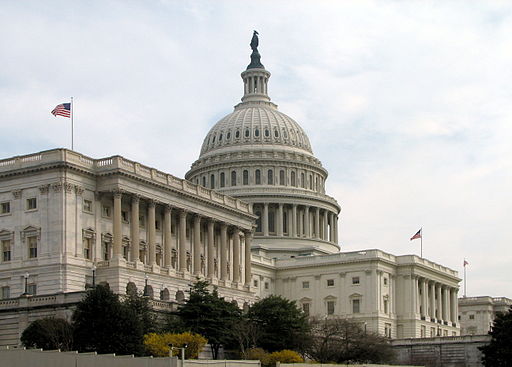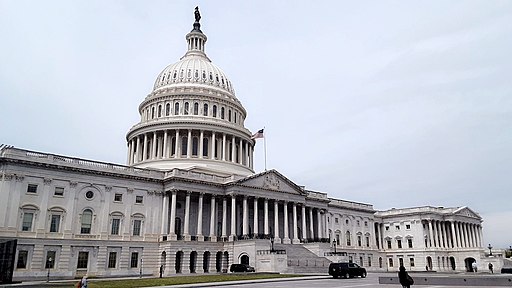Tag: ohio
-
Here are the top 10 places Ohio candidates and PACs are spending campaign money

In Ohio politics, state-level candidates and PACs spent $59.24 million between Jan. 1, 2021, and Apr. 13, 2022. More than $10.65 million or 17.98 percent of all campaign finance expenditures went to the 10 payees at the top of the list. A payee is an entity or individual who has received money from a campaign…
-
Vance wins Ohio Senate Republican primary

J.D. Vance defeated six other candidates in the May 3 Republican primary for U.S. Senate in Ohio, including Matt Dolan, Mike Gibbons, Josh Mandel, and Jane Timken. Vance received 31.3% of the vote, while Mandel, Dolan, Gibbons, and Timken received 24.3%, 21.9%, 12%, and 6.6%, respectively. Incumbent Rob Portman (R), who was first elected in 2010, did not file to run for…
-
Tim Ryan wins Democratic nomination for U.S. Senate in Ohio

Tim Ryan defeated Morgan Harper and Traci Johnson in the Democratic primary for Ohio’s U.S. Senate seat on May 3, 2022. Based on unofficial totals, Ryan received 73% of the vote, Harper received 16% of the vote, and Johnson received 11% of the vote. Ryan will face J.D. Vance (R) and five other candidates in…
-
LaRose defeats Adams in Ohio Secretary of State Republican primary

Incumbent Frank LaRose defeated John Adams in the May 3, 2022, Republican Party primary for Ohio Secretary of State. As of Wednesday morning, LaRose had received 66% of the vote to Adams’ 34%. LaRose will face Democratic primary winner Chelsea Clark (D) in the general election on Nov. 8. LaRose was elected Ohio Secretary of…
-
Shontel Brown defeats Nina Turner in OH-11 Democratic primary rematch

Incumbent Rep. Shontel Brown defeated Nina Turner in the Democratic primary for Ohio’s 11th Congressional District on May 3. As of Wednesday morning, Brown had received 66% of the vote to Turner’s 34%. This was a rematch. Brown defeated Turner 50% to 45% in the Aug. 3, 2021, special primary election. Brown assumed office in…
-
J.R. Majewski wins Republican primary in Ohio’s 9th Congressional District

J.R. Majewski defeated three other candidates—including two state lawmakers, Rep. Craig Riedel and Sen. Theresa Gavarone—on May 3 to win the Republican nomination for Ohio’s 9th Congressional District. Majewski will face incumbent U.S. Rep. Marcy Kaptur (D), first elected in 1982, in the general election on Nov. 8. In the primary, Majewski led the field…
-
Ohio Republican lawmakers introduce bill to ban divisive concepts from public schools

Reps. Mike Loychik (R) and Jean Schmidt (R) on April 4, 2022, introduced a bill in the Ohio House of Representatives that aims to ban curriculum that promotes divisive or racist concepts in public schools. The bill provides a list of prohibited topics including critical race theory; intersectionality; diversity, equity, and inclusion learning outcomes; and…
-
Ohio Senate District 23 candidates raise most money ahead of May 3 primary

Elections for 17 of 33 seats in the Ohio State Senate will take place on November 8, 2022. State senatorial primary elections are held on May 3, 2022. Republicans hold a 25-8 majority heading into the election. This article details the five most and least expensive contested primary elections in the State Senate. In the…
-
Ohio House District 17 candidates raise most money ahead of May 3 primary

Elections for all 99 seats in the Ohio House of Representatives will take place on November 8, 2022. State house primary elections are held on May 3, 2022. Republicans hold a 64-34 majority heading into the election. This article details the five most and least expensive contested primary elections in the House of Representatives. In…
-
The top 10 Ohio candidates raised 31.2% of all donations

In Ohio politics, state-level candidates and PACs raised $79.2 million between Jan. 1, 2021, and Apr.13, 2022. More than $24.7 million or 31.2 percent of all donations was raised by the 10 individuals at the top of the list. Top 10 Ohio candidates (1/1/2021 – 4/13/2022) Here are the 10 Ohio candidates who have raised…

